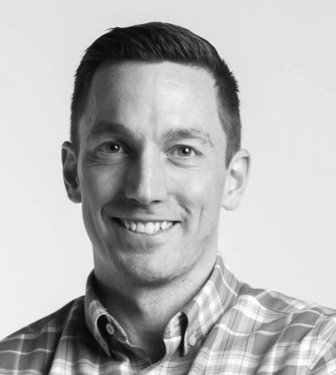Migration
A triple threat of climate, health, and economic emergencies is restructuring homes, cities, landscapes, and demographics. Rapid shifts in urban populations and their needs and behaviors during the pandemic have forced cities to quickly adapt, weighing the heavy choice of how to evolve in both the near and far term.
Whether motivated by religion, conflict, or economics, migration has always been both an indicator and a genesis of seismic change in society. This past year has put a renewed lens on migration and its effects, as the pandemic, climate change, and economic recession upended lives and both forced and encouraged people to move.
Throughout history, since the earliest migration of Homo sapiens out of Africa, human migration has shaped civilization. Whether motivated by religion, conflict, or economics, migration has been both an indicator and a genesis of seismic change in society. This past year has put a renewed lens on migration and its effects, as the pandemic, climate change, and economic recession upended lives and both forced and encouraged people to move.
We’ve all gained a new perspective on space. Confined to our homes, hyperaware of the six feet between us, we began to focus on what was around us. We nested, invested in our homes, and purchased new ones. Without the tether to places of work or school, many people fled the contagion-friendly density of major metropolitan areas like New York and San Francisco in favor of the extra space offered by suburban and rural environments Around a fifth of US adults moved due to the pandemic or know someone who did.⁸⁷ Many moved because they didn’t have a choice–either due to loss of income or closing universities, it’s estimated that 30-40 million people around the US are at risk for eviction.⁸⁸ Economic hardship in countries such as Tunisia has worsened the refugee crisis in Italy and Malta.⁸⁹
In contrast to the sudden changes brought by the pandemic, the crisis of climate migration has been in the making for decades, with renewed attention brought to it this year. For nearly two months, fires raged up and down the west coast, crossing the California boarder up into Oregon and Washington, killing dozens and forcing the evacuation of hundreds of thousands.⁹⁰ FEMA, HUD, and the US Army Corps of Engineers all began various programs to encourage and, at times, force entire communities to relocate from flood-prone areas.⁹¹ Flooding in southern China forced four million people to evacuate with little government assistance, leaving many no choice but to relocate permanently.⁹² While experts, activists, and politicians have been sounding the climate alarm for decades, with the compounding effects of the pandemic, we are clearly entering a new phase.
These two major causes of recent migration, economy and climate, are not new phenomena. Coming off of the Great Recession, suburbs and tier-two cities have been experiencing growth for much of the last decade, and Europe has been facing a refugee crisis for years. Climate migrants in Central America have been moving north for many decades as prolonged droughts have made more and more land unfarmable. As with many things, COVID did not create these shifts, but it is compounding them.
This forced reorganization of space–to absorb migrant populations, to reduce transmission of the virus, and to address the dangers of climate change–is reshaping cities around the world. In the face of unwelcome change, some places are doubling down. In the aftermath of the Tubbs Fire, Sonoma county has been busy rebuilding 85% of the 5,600 homes destroyed, even though they remain vulnerable to future fires.⁹³ Many residents of California towns razed by the fires have chosen to stay and rebuild. In Charleston, NC, the US Army Corps of Engineers is planning a storm surge wall that will fend off storms for the next 50 years.⁹⁴ Boston is considering a similar barrier.⁹⁵ These are strategies of delay, defense, and in some cases denial: The effort to keep Venice from sinking playing out on smaller and less dramatic stages around the world.
Meanwhile, many cities have been experimenting with the new. London is moving to aggressively expand its bike infrastructure, doubling the number of protected cycle lanes,⁹⁶ and creating numerous low-traffic neighborhoods more friendly to pedestrians.⁹⁷ Cities across the US have been turning over parking spaces, sidewalks, and replanning streetscapes to allow for outdoor dining.⁹⁸ Many cities have also shut down entire streets to cars, making room for crowds of distanced cyclists, walkers, and joggers.⁹⁹ In China, contact tracing efforts led the government to consider the digital infrastructure of public space, and Shanghai is now building a digital twin in anticipation of 5G to enable the management of everything from traffic patterns, to energy management, to tracking the virus and density of people in specific locales.¹⁰⁰
Five months after the onset of the pandemic in the US, Zillow released a report dispelling the narrative that dozens of major news outlets had been advancing for months. People had not been fleeing cities for suburban homes–listings, searches, and sales were actually down.¹⁰¹ But as data compiled by the New York Times points out, some people did move out of cities—wealthy people.¹⁰² The opposite is true for climate migration. Rebuilding your home after a forest fire, hurricane, or flood is expensive, as is accessing scarce water for your crops. The first to be affected by climate change are often poor, rural populations. With nothing left for them where they are, they pack up and move to cities. These two populations, the COVID-fleers and the climate migrants, are passing ships, shifting the demographics of the places they’re migrating to and from.
Humans are a naturally adaptive species and rebuilding in the wake of disaster is a natural instinct. But as we come out of one disaster (COVID), muscle through another (economic recession), and begin to endure the real, tangible effects of a third (climate change), we can continue to rebuild for a past we know is not coming back, or we can throw our energy into designing for a future that’s just beginning to take shape.
we can continue to rebuild for a past we know is not coming back, or we can throw our energy into designing for a future that’s just beginning to take shape.
The Changing Landscape of Property Management
Maggie Peng
Senior Director, Shanghai Studio
Shanghai, China
One of the clearest trends accelerated by COVID-19 is the use of digital tools and platforms to manage processes that have traditionally been physical or manual. The impact of the pandemic affected office buildings, retail space, multi-family residential buildings, and even single-family residential properties. In Asia, the focus has been on shifting dense urban office buildings and multi-family residential complexes to be as contactless as possible. With more people working from home at least part of the work week, many new typologies for flexible work and living spaces are in demand. The new need for workspace in the home has prompted many to reconfigure, reconsider, or move completely to meet their needs. This requires shifts in how property management needs to leverage physical assets using digital tools while at the same time provide digital channels for engagement and communications.
In terms of retail space, the continuation of malls and other retail destinations as places of social activity and community gathering is on the rise in Asia and the Middle East. Retailers continue to experiment with different modes of engagement beyond the purchase journey and experience. More smart technologies are being leveraged to capture 360 data on engagements with customers, such as loyalty programs that incentivize engagement in exchange for data. Local government and retailers in China and other parts of Asia have also brought back the outdoor market, which has a long tradition and cultural resonance with urban dwellers. Typologies like the “night market” with kiosk-like stalls outdoors are coming back to encourage small business on the streets.
In the US, larger shopping malls, many in the suburbs, are needing to shift their business in order to survive. As more consumers shifted to online shopping during COVID-19, asset heavy shopping malls are exploring different future forward directions for re-use. Many of the ideas are looking at different ways to introduce other usages such as residential apartments or office space to pivot towards mixed-use developments that could bring a more urban approach to suburban living. Meanwhile, main streets and high streets also need to re-invent retail strategies that meet local needs. For years, shopping districts have catered to bigger brands with bigger budgets making it more difficult for smaller local brands to be part of the retail mix. Moving forward, retail property owners and management companies are more willing to explore shifts in lease formats such as pop-ups–shorter or seasonal leases to re-activate vacant storefronts that can leave holes in the community.

Looking Back to Plan Forward: How Vacation Trends from the Past Can Give Us Insight into the Future
Rebecca Pinn
Associate Director, Innovation Consulting
Boston, MA, USA

Dustin Boutet
Director, Innovation Consulting, Vertical Lead, Travel + Hospitality
Boston, MA, USA
As COVID-19 radically changes lives in big and small ways, the impact on the travel and hospitality industry has been drastic. To respond to the new needs and emerging opportunities of this moment of widespread change, travel can learn from two periods of recreational transformation in US history–the boom in wilderness vacationing in the early 20th century and the advent of car culture the 1950s.
2020 has been a surreal year, but it isn’t entirely unprecedented. Nearly 100 years ago, multiple illnesses and pandemics–including tuberculosis, cholera, polio, and influenza–swept across the United States. Cities and other places where people lived in close quarters, such as troop ships, were hit particularly hard. “Fresh air” became the go-to treatment for city kids. Summer camps, which had been around for decades, began to take off, growing into what is now an $18 billion industry.
In the 60’s and 70’s, families would escape the hustle and bustle of city life for the woodsy resorts found in movies like Dirty Dancing. These vacations spots, usually just a drive away from home, have been on the decline since the rise of cheap flights to Europe and other exotic overseas locations. But now, with families weary of air travel and Airbnbs in the woods sold out for months, these kinds of local destinations are poised to make a comeback.
RV rentals increased 650% in 2020, as travelers have tried to keep socially distanced and avoid crowds. The #vanlife trend is booming and used car sales are up 22% year-over-year.¹⁰³ With more Americans hitting the road and exploring the country, the ‘roadside attraction,’ which proliferated during the 1950s consumer automobile boom, can re-invent itself for a new generation of road-trippers. Instead of relying on oddities and the world’s largest balls of string, communities should think about how to highlight what makes them authentic and unique. Social aggregators can help promote local cuisine and attractions. The industry can leverage lessons from the successful history of American tourism and the technologies and digital tools of today to superpower a local travel revolution.

Order Up! A Conceptual Service for the Age of Delivery
Buck Sleeper
Director, Innovation Consulting & Vertical Lead, Restaurants + Retail
Boston, MA, USA
As populations shift to more rural locations, offsite commissaries become more prevalent, and autonomous delivery vehicles extend the range of their services, restaurants will experience the same mounting challenge: kitchen staffing. Food service is already known for its high turnover, resulting in the constant need to train and coach employees. To drive engagement, improve accuracy, and maintain throughput, we’re seeing an expansion of contextual technologies to coach employees (new and veteran) through their work.
<earpiece activated> Good morning, Curtis. Hands washed—that’s a 10-day streak. Background music unlocked. Body temperature looks good, respiration rate looks good. Soundtrack on: Idles, Joy as an Act of Resistance. OK, let’s go to work.
Order up!
Delivery vehicle on approach, 90 seconds out. Spicy Chicken, hot. Oscar in Amherst. Personal message for you, “What’s up Curt! Extra pickles on the side!” OK: Target build time 85 seconds, stretch goal is 82. Here we go.
Rye bread slice. Check.
Chipotle sauce. A little more, yep, check.
Roasted chicken, three pieces. Check.
Bacon, two strips. Check.
Size 3 scoop of shredded cheddar—no, that’s provolone, to the right. Yep, check.
And another slice of rye on top. Check.
<auto audit> OK, build looks good. Let’s give it some heat.
Oven primed for a 15 second cycle. Circle tray—no wait, that one looks dirty. Square tray will do. Compensating broiler level. While we’re toasting: Lulu wants everybody to know she’s opening a third location. Referral bonus for successful recruits. Almost ready…
Black handled spatula, check.
Craft paper base, check.
Lift from the bottom, nice.
Diagonal cut, check.
Roll and fold, seal with a green sticker. Check.
Thermal wrap, two sheets. This one’s going out by air.
Bag it up–“Minuteman Melts,”medium, with a handle.
Napkins, check. Don’t forget those pickles.
<auto audit> OK, looks good! Printing the sanitation seal.
Fold over the top, great.
Sign a quick thank you note.
Hang it on the sky hook. And, take off!
81 seconds. Pretty darn good.
Order up!
Transaction details:
Order #0203
September 30, 2021 - 9:57 AM
Employee 011: Curtis Reynolds (tenure: 12 days)
Location: Pioneer Mall, Level 3. Formerly J. Crew.
Client: Lulu Restaurant Group. Virtual brands: Amherst Deli Supply, Minuteman Melts, Lulu’s Lemons
The preceding excerpt is a transaction record from Order Up!, a conceptual kitchen coaching service designed to onboard employees through conversational A.I. and computer vision. Order Up!’s integration with human resources, fleet coordination, and growth strategy enables businesses large and small to scale their operations. Read about design fiction as a tool for complicated futuring at Technology Review, or more examples in the New York Times’s Op-Eds From the Future.


27%
There was a 27% increase in temporary moves from February to July 2020 vs the same months last year, based on change of address requests with the USPS. How many of these temporary moves will stick?

